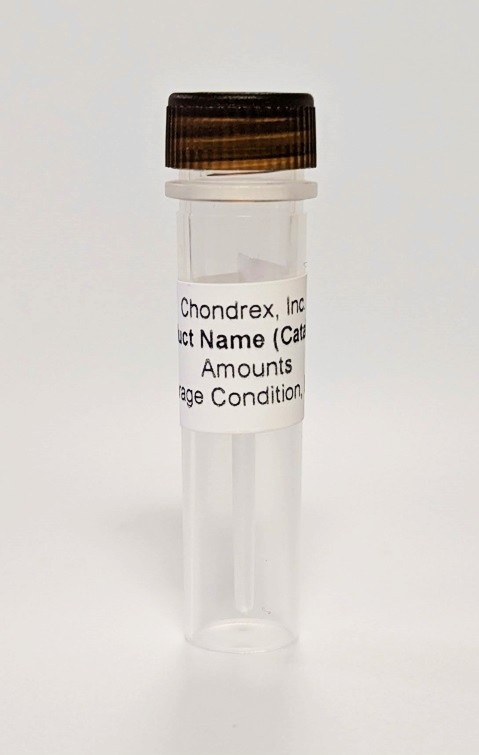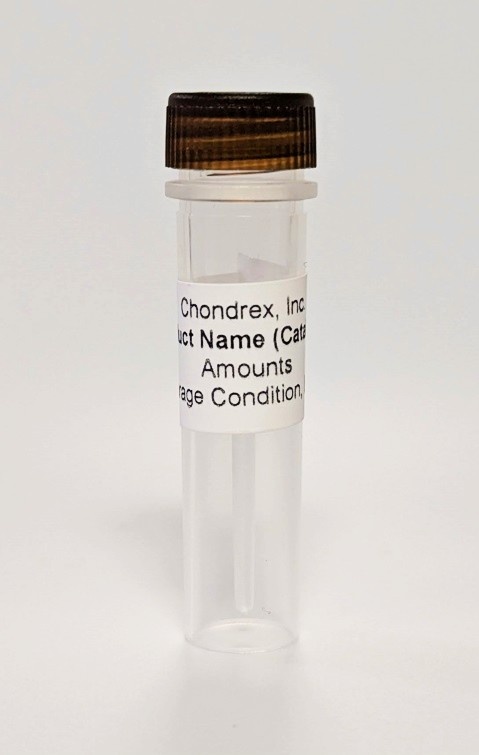Targeted cancer therapy has become a new generation of cancer treatment, one which delivers drugs to specific carriers and interferes with the specific target molecules that play a critical role in tumor growth or progression (1). For example, exosomes, small vesicles expressing specific surface markers (CD81, CD63, and CD9), play roles in cancer progression and tumorigenesis and can potentially be used as a target for immunotherapy, such as a carrier of chemotherapy and cancer vaccines (2, 3). On the other hand, programmed death 1 protein (PD-1) and cytotoxic T-lymphocyte-associated antigen 4 (CTLA-4) expressed on activated T-cells, mediate immunosuppression by binding to PD-1 ligands (PD-L1 or PD-L2) and CTLA-4 ligands (CD 80 or CD86), respectively. Inhibiting the interaction between PD-1/CTLA-4 and their ligands can lead to anti-tumor activity (5, 6). Chondrex, Inc. provides monoclonal antibodies against human CD9 and CD63 for exosome research and mouse PD-1, PD-L1, and CTLA-4 antibodies for cancer research.
Interleukin (IL)-10 is secreted by a variety of cells including macrophages, T cells, B cells, and mast cells. When IL-10 dimerizes and binds receptor molecules, IL-10R1 and IL-10R2, the event initiates anti-inflammatory cascades which include activation of the Janus kinase family to limit secretion of pro-inflammatory cytokines such as TNF, IL-1, IL-6, and IL-12. Chondrex, Inc. provides IL-10 receptor antibodies which recognize mouse IL-10R1 molecules, amino acid sequence 188- 202: CVKVLPRLESRINKA, and work for ELISA and WB analysis.
Antibodies for Cancer Research
Antibodies for Mouse IL-10 Receptor (IL-10RA)
Background of Targeted Cancer Therapies
Cancer can be considered as an inability of the host to eliminate transformed cells. Surgery is the primary method of treatment for most isolated solid cancers and may work to prolong survival. However, chemotherapy and radiation are generally still used to treat many types of cancers. Recently, targeted therapy has emerged as a new generation of cancer drugs designed to interfere with specific target molecules (proteins) that are believed to have a critical role in tumor growth or progression. Furthermore, these new therapeutics and drug designs have been used for improving current drug therapies. (1).
1) Exosome for drug delivery system
Exosomes are small vesicles, 30-100 nm in diameter, that contain membrane-bound receptors and carry proteins and miRNAs. Exosomes can be distinguished by size and specific surface markers including CD81, CD63, and CD9. Also, cancer patients have unusually high levels of exosomes in bodily fluids, suggesting that exosomes play a role in cancer progression and tumorigenesis. Unlike synthetic nanoparticles, exosomes are biocompatible and biodegradable, and thus have low toxicity and immunogenicity, making them ideal for drug loading and delivering chemotherapy and cancer vaccines (2, 3).
2) Immune-checkpoint therapy
Tumors develop multiple resistance mechanisms, including local immune suppression (4). Programmed death 1 protein (PD-1) and cytotoxic T-lymphocyte-associated antigen 4 (CTLA-4) are key immune checkpoint receptors expressed by activated T-cells, and they mediate immunosuppression by binding to PD-1 ligands (PD-L1 and PD-L2) and CTLA-4 ligands (B7-1 and B7-2), respectively, which are expressed by tumor cells. Inhibition of the interactions between PD-1/CTLA-4 and their ligands can enhance T-cell responses, leading to anti-tumor activity (5, 6).
References
1. C. Sawyers. Targeted cancer therapy. Nature 10, 1-4 (2004).
2. J. Wang, Y. Zheng, M. Zhao, Exosome-Based Cancer Therapy: Implication for Targeting Cancer Stem Cells. Front. Pharmacol. 7, 4360-11 (2017).
3. Y. Fujita, Y. Yoshioka, T. Ochiya, Extracellular vesicle transfer of cancer pathogenic components. Cancer Sci. 107, 385-390 (2016).
4. C. Wang et al., In Vitro Characterization of the Anti-PD-1 Antibody Nivolumab, BMS-936558, and In Vivo Toxicology in Non-Human Primates. Cancer Immunology Research. 2, 846-856 (2014).
5. S. L. Topalian et al., Safety, Activity, and Immune Correlates of AntiPD-1 Antibody in Cancer. N Engl J Med. 366, 2443-2454 (2012).
6. E. I. Buchbinder, A. Desai, CTLA-4 and PD-1 Pathways. American Journal of Clinical Oncology. 39, 98-106 (2016).


